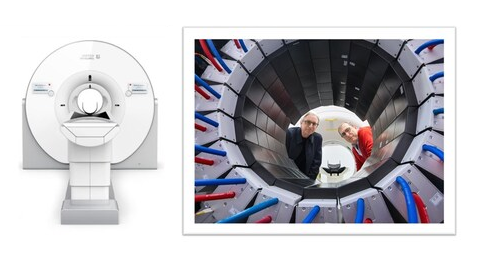
University of Maryland computer scientists have developed an innovative camera system that could revolutionize how robots perceive and interact with their environment. This technology, inspired by the human eye’s involuntary movements, aims to improve the clarity and stability of robotic vision.
The research team, led by PhD student Botao He, detailed their findings in a paper published in the journal Science Robotics. Their invention, the Artificial Microsaccade-Enhanced Event Camera (AMI-EV), addresses a critical challenge in robotic vision and autonomous systems.
The Problem with Current Event Cameras
Event cameras, a relatively new technology in the field of robotics, excel at tracking moving objects compared to traditional cameras. However, they face significant limitations when capturing clear, blur-free images in high-motion scenarios.
This shortcoming poses a substantial problem for robots, self-driving cars, and other technologies that rely on accurate and timely visual information to navigate and respond to their environment. The ability to maintain focus on moving objects and capture precise visual data is crucial for these systems to function safely and effectively.
Inspiration from Human Biology
To tackle this challenge, the research team turned to nature for inspiration, specifically the human eye. They focused on microsaccades, which are tiny, involuntary eye movements that occur when a person attempts to focus their vision.
These minute but continuous movements allow the human eye to maintain focus on an object and accurately perceive its visual textures, such as color, depth, and shadowing, over time. By mimicking this biological process, the team aimed to create a camera system that could achieve similar stability and clarity in robotic vision.

UMIACS Computer Vision Laboratory
The Artificial Microsaccade-Enhanced Event Camera (AMI-EV)
The AMI-EV’s core innovation lies in its ability to replicate microsaccades mechanically. The team incorporated a rotating prism inside the camera to redirect light beams captured by the lens. This continuous rotational movement simulates the natural movements of the human eye, enabling the camera to stabilize the textures of recorded objects in a manner similar to human vision.
To complement the hardware innovation, the team developed specialized software to compensate for the prism’s movement within the AMI-EV. This software consolidates the shifting light patterns into stable images, effectively mimicking the brain’s ability to process and interpret visual information from the eye’s constant micro-movements.
This combination of hardware and software advancements allows the AMI-EV to capture clear, accurate images even in scenarios involving significant motion, addressing a key limitation of current event camera technology.
Potential Applications
The AMI-EV’s innovative approach to image capture opens up a wide range of potential applications across various fields:
- Robotics and Autonomous Vehicles: The camera’s ability to capture clear, motion-stable images could significantly enhance the perception and decision-making capabilities of robots and self-driving cars. This improved vision could lead to safer and more efficient autonomous systems, capable of better identifying and responding to their environment in real-time.
- Virtual and Augmented Reality: In the realm of immersive technologies, the AMI-EV’s low latency and superior performance in extreme lighting conditions make it ideal for virtual and augmented reality applications. The camera could enable more seamless and realistic experiences by rapidly computing head and body movements, reducing motion sickness and improving overall user experience.
- Security and Surveillance: The camera’s advanced capabilities in motion detection and image stabilization could revolutionize security and surveillance systems. Higher frame rates and clearer images in various lighting conditions could lead to more accurate threat detection and improved overall security monitoring.
- Astronomy and Space Imaging: The AMI-EV’s ability to capture rapid motion with unprecedented clarity could prove invaluable in astronomical observations. This technology could help astronomers capture more detailed images of celestial bodies and events, potentially leading to new discoveries in space exploration.
Performance and Advantages
One of the most impressive features of the AMI-EV is its ability to capture motion at tens of thousands of frames per second. This far surpasses the capabilities of most commercially available cameras, which typically capture between 30 to 1,000 frames per second.
The AMI-EV’s performance not only exceeds that of typical commercial cameras in terms of frame rate but also in its ability to maintain image clarity during rapid motion. This could lead to smoother and more realistic depictions of movement in various applications.
Unlike traditional cameras, the AMI-EV demonstrates superior performance in challenging lighting scenarios. This advantage makes it particularly useful in applications where lighting conditions are variable or unpredictable, such as in outdoor autonomous vehicles or space imaging.
Future Implications
The development of the AMI-EV has the potential to transform multiple industries beyond robotics and autonomous systems. Its applications could extend to fields such as healthcare, where it might assist in more accurate diagnostics, or in manufacturing, where it could improve quality control processes.
As this technology continues to develop, it may pave the way for even more advanced and capable systems. Future iterations could potentially integrate machine learning algorithms to further enhance image processing and object recognition capabilities. Additionally, miniaturization of the technology could lead to its incorporation into smaller devices, expanding its potential applications even further.


link





